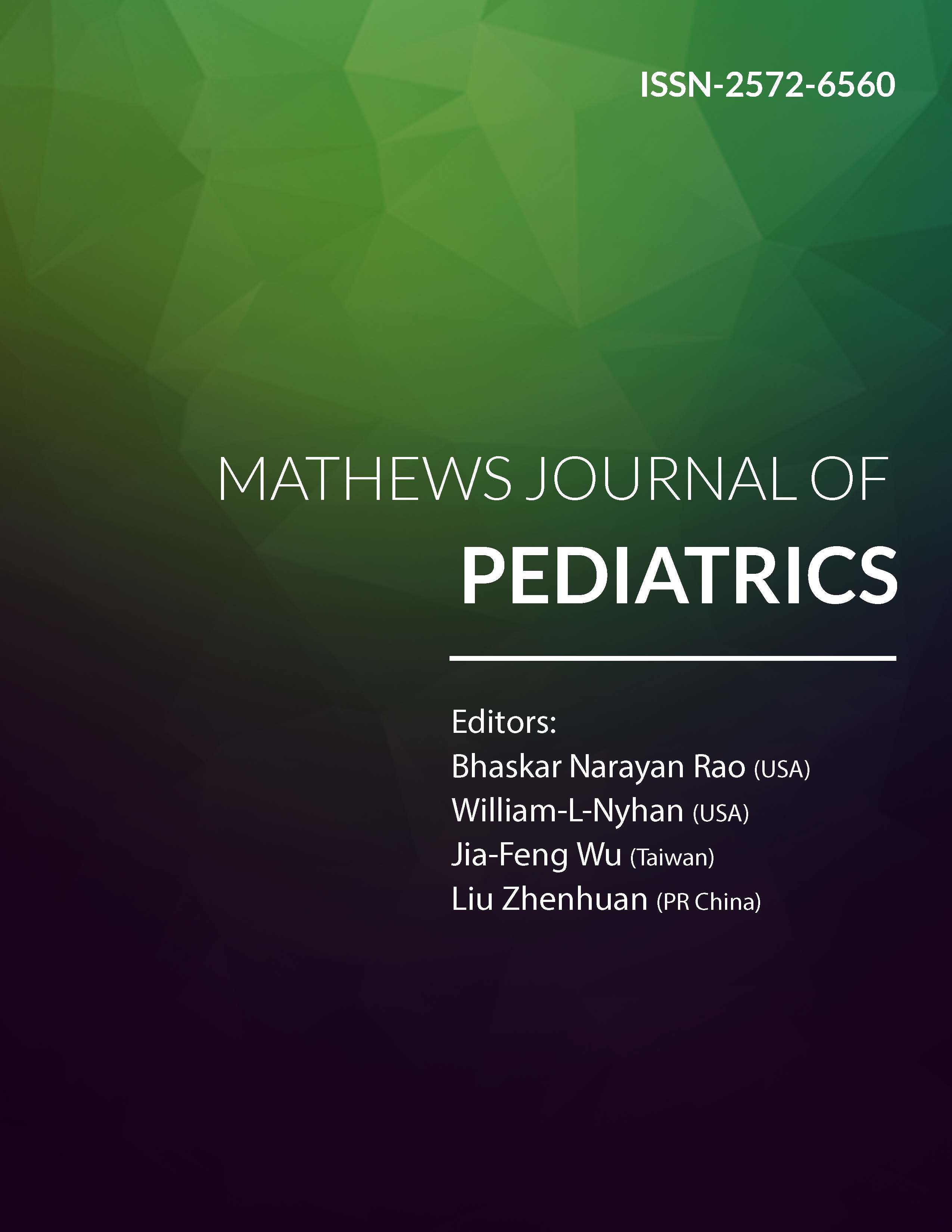
Information Links
Previous issues
Related Conferences
Previous Issues Volume 8, Issue 2 - 2023
Early Mobilization in a Pediatric Intensive Care Unit
Camila Gemin R Locatelli*, Valéria C Neves, Adriana Koliski, José E Carreiro
Pediatric Intensive Care Unit, Hospital de Clínicas Complex, Federal University of Paraná (UFPR), Curitiba (PR), Brazil
*Corresponding author: Camila Gemin R Locatelli, Pediatric Intensive Care Unit, Hospital de Clínicas Complex, Federal University of Paraná (UFPR), Curitiba (PR), Brazil, Email: [email protected].
Received Date: September 09, 2023
Published Date: December 11, 2023
Citation: Locatelli CGR, et al. (2023). Early Mobilization in a Pediatric Intensive Care Unit. Mathews J Pediatr. 8(2):32.
Copyrights: Locatelli CGR, et al. © (2023).
EDITORIAL
The development of critical illness-related muscle dysfunction is a significant and common complication, affecting up to 60% of patients admitted to Intensive Care Units. In recent decades, significant advances in understanding morbidities in critically ill patients have driven a shift in the approach to these cases [1]. The Pediatric Intensive Care Unit (PICU) is not exempt from this complication: acquired weakness and delirium, along with other functional complications, are common in this setting [2]. These findings underscore the importance of focusing on the prevention and proper treatment of children during their stay in the PICU. Acquired muscle weakness results from prolonged immobility and negatively impacts the child's ability to perform daily activities and motor tasks. These complications can significantly influence the duration of mechanical ventilation, prolonging the period during which the child requires respiratory support. Additionally, functional loss and impaired quality of life can extend the recovery and rehabilitation time after PICU discharge.
Early mobilization (EM) is a safe and feasible practice, with few reports of adverse events [3]. It involves engaging in motor activities appropriate to the patient's clinical capacity and stability, taking into account their level of consciousness and neuropsychomotor development acquired before admission to the PICU. The implementation of EM is based on specific institutional guidelines aimed at increasing early and safe mobility, making it an essential part of the recovery process [4-6].
It is important to note that EM not only helps prevent physical complications but can also have a positive impact on the psychological and emotional recovery of the patient. By allowing the child to move and actively participate in the rehabilitation process, EM can provide a sense of progress and autonomy, improving the overall patient experience during their stay in the PICU.
This approach has shown promise in reducing the adverse effects of prolonged immobility, as early mobilization aims to minimize the loss of muscle strength and function while improving the functional prognosis and quality of life for children after hospital discharge.
PERSPECTIVES
Given the challenges, the adoption of preventive measures such as EM is crucial to reduce the adverse effects of immobility, decrease delays in neuropsychomotor development, and improve the prognosis of children admitted to the PICU. The multidisciplinary team must be involved throughout the process, but it is the responsibility of the physiotherapist to define the intervention. The involvement of the care team is essential for planning and implementing rehabilitation and stimulation strategies appropriate to the age and condition of each child.
CONFLICTS OF INTEREST
The authors declare no conflicts of interest.
REFERENCES
- Heneghan JA, Pollack MM. (2017). Morbidity: Changing the Outcome Paradigm for Pediatric Critical Care. Pediatr Clin North Am. 64(5):1147-1165.
- Álvarez JP, Vázquez EN, Eulmesekian PG. (2021). Incidence of morbidity and associated factors in a Pediatric Intensive Care Unit. Arch Argent Pediatr. 119(6):394-400.
- Owens T, Tapley C. (2018). Pediatric Mobility: The Development of Standard Assessments and Interventions for Pediatric Patients for Safe Patient Handling and Mobility. Crit Care Nurs Q. 41(3):314-322.
- Wieczorek B, Ascenzi J, Kim Y, Lenker H, Potter C, Shata NJ, et al. (2016). PICU Up!: Impact of a Quality Improvement Intervention to Promote Early Mobilization in Critically Ill Children. Pediatr Crit Care Med. 17(12):e559-e566.
- Choong K, Awladthani S, Khawaji A, Clark H, Borhan A, Cheng J, et al. (2017). Early Exercise in Critically Ill Youth and Children, a Preliminary Evaluation: The weecycle Pilot Trial. Pediatr Crit Care Med. 18(11):e546-e554.
- Betters KA, Hebbar KB, Farthing D, Griego B, Easley T, Turman H, et al. (2017). Development and implementation of an early mobility program for mechanically ventilated pediatric patients. J Crit Care. 41:303-308.